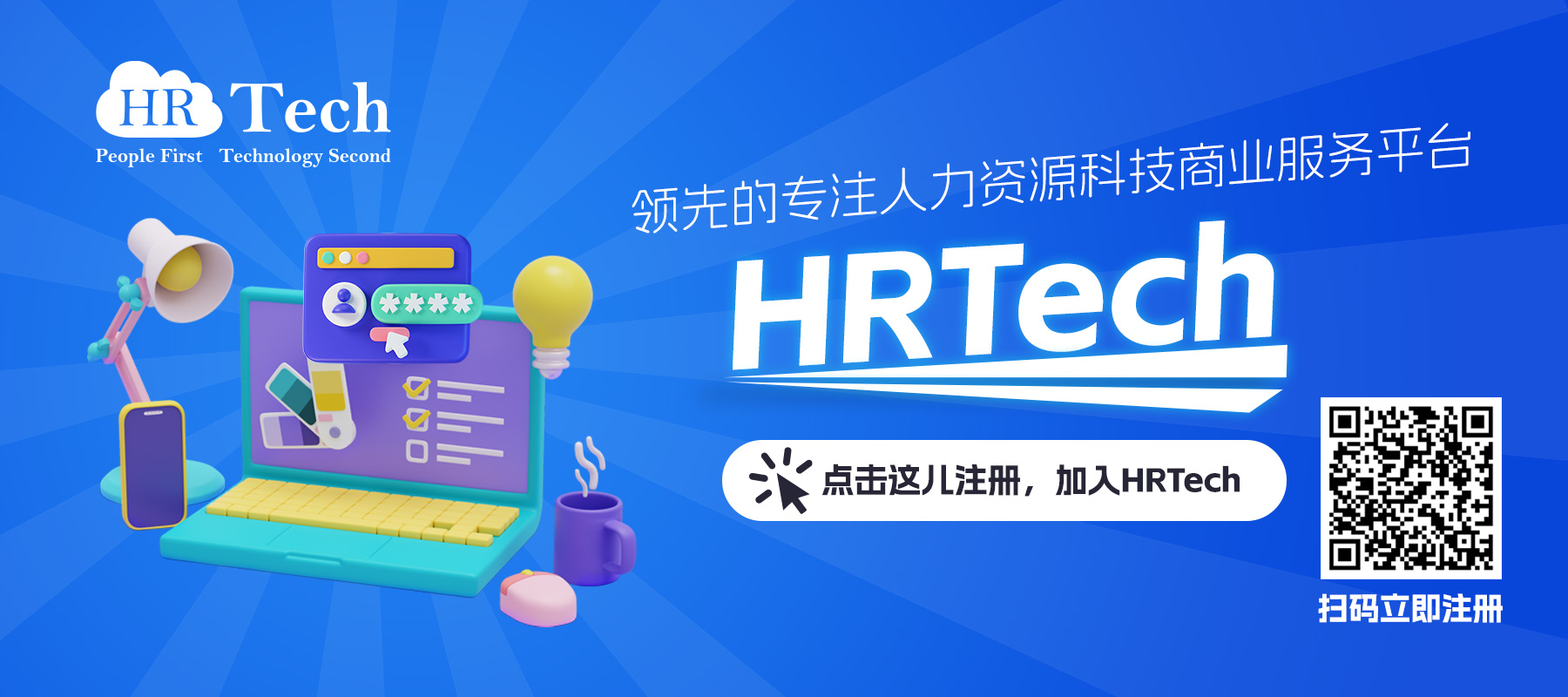资讯
【精选】HRTech周资讯(12.21-12.31)
以下是HRTechChina为您整理的上两周(12.21–12.31)人力资源科技行业精彩动态。上周的人力资源科技行业一周动态我们将分为三个板块,分为一周热文、一周融资/收购报道、以及一周产品报道。
如对HRTech方面有自己的见解、作品以及资讯,也欢迎大家投稿至tougao@hrtechchina.com
一周热文
实战分享:资本寒冬下,如何实现低成本创业?
本文来自石墨 COO 方兴近日在一次创业分享会中的分享。他分享了很多低成本创业的实战经验以及踩过的一些坑,相信对很多创业者都会有所启发和借鉴。
详细内容链接:http://www.hrtechchina.com/10836.html
企业服务的3种模式:On-Premise、SaaS、Mixed,该选哪种?
有句话说得很好:没有最好的模式只有最适合的模式。一家成功的企业服务厂商会选取正确的模式提供服务,且模式会在企业发展进程中不断进化。作为大数据分析服务的厂商,走快半步也许刚好,走快一步就成先驱。选择比努力更重要,因势利导的顺势而为,远好过悲壮搏杀的逆势而为。
详细内容链接:http://www.hrtechchina.com/10919.html
谈招聘:一个对的人,是对整个团队的救赎
年轻的创业者们,当你没有钱,没有个人影响力,只有一腔热血或者几百万的融资时,要怎么去招聘呢?初创公司粮草有限,在招人这件事儿错不起,要怎么判断一个人是否适合你的团队呢?这是本文将探讨的话题。
详细内容链接:http://www.hrtechchina.com/10959.html
Y Combinator 创业终极指南:创业想法篇
本文出自全球最顶尖的创业孵化器 Y Combinator 的掌门人 Sam Altman。他对 YC 多年的创业项目孵化经验进行了提炼和梳理,分别从创业想法、团队,产品和执行力方面为创业者提供了一套系统完整的创业指南。不管你正在创业还是打算创业,这篇文章都不容错过。
详细内容链接:http://www.hrtechchina.com/10952.html
为什么很多SaaS企业级产品都熬不过第一年?
2015年2B企业级应用软件的资本市场异常火热。包括纷享销客、销售易、今目标等一众企业级软件厂商受到各大VC的资本热捧,阿里重金打造的钉钉,也以后发制人之势席卷整个企业级SaaS市场,力图在这块价值洼地上打造另一个新“入口“。
详细内容链接:http://www.hrtechchina.com/10972.html
一周融资/收购报道
“岂安科技” 获得经纬中国千万级天使轮融资,SaaS 不一定适合做业务风险控制
目前 “岂安科技” 已于 11月 底拿到了来自经纬中国的千万级天使轮融资。
bigsec岂安科技是一家致力于为企业客户提供账户、业务类安全风险控制的解决方案的公司,通过完全本地部署的风险监控系统分析解决各类业务安全风险。
详细内容链接:http://www.hrtechchina.com/10831.html
神秘大数据公司Palantir融资8.8亿美元,估值高达200亿美元
在12月中旬的时候,有报道称 Palantir 在新一轮融资中获得1.29 亿美元投资。实际上 Palantir 本轮的融资金额要远远高于这个数字。
作为一家带有神秘色彩的大数据公司,Palantir 的客户目前主要分两类,一类是美国政府和军方客户,包括 CIA、NSA、FBI、海陆空三军、DIA(国防情报局等;一类包含银行、投行等金融机构。除此之外,还包括大健康、医疗、能源等数据方向的客户。
详细内容链接:http://www.hrtechchina.com/10911.html
智能机器人客服SaaS供应商,“云问”完成1000万人民币Pre-A轮融资
人工智能机器人客服SaaS供应商云问创始人王清琛透露,云问已于12月完成1000万人民币Pre-A轮融资,此轮资金主要用于研发投入,即研究细分的行业需求,形成更完善的产品体验及应用体系。
云问是一个智能客服机器人SaaS服务平台,通过机器人问答模拟人工客服为用户提供客服服务。云问上线于2013年初。
详细内容链接:http://www.hrtechchina.com/10948.html
企业安全公司青藤云安全获6000万人民币A轮融资
互联网企业安全初创公司青藤云安全今天上午宣布获得来自宽带资本、红点创投的6000万人民币A轮融资,刷新了国内安全初创企业A轮融资记录,网络安全市场进入井喷式爆发阶段。
青藤研发的自适应安全平台可以自适应各种基础设施和业务场景,并可跟随变化自动处理企业绝大部分安全事件,为企业业务构建安全模型,分析内外异常行为,捕捉并阻止未知的黑客攻击。
详细内容链接:http://www.hrtechchina.com/10945.html
上线半年融资百万,大三学生创办的达校网想要匹配校企信息
2015年11月,达校网完成由59store、暾澜基金、和盟基金以及个人天使投资的数百万人民币天使轮融资。
达校网通过自建网络平台连接了企业、校方、学生三大群体,来减少企业和学校之间的信息不对称问题。
详细内容链接:http://www.hrtechchina.com/10939.html
又一个社保领域的互联网+ “社保通” 玩家入场,11月获真格基金千万融资
11月 份,社保通获得了真格基金千万级的天使轮融资。
社保通目前将业务重心放在大中型企业的社保、公积金缴交、理赔、咨询、账单、转移等服务上,非常注重交付质量和速度。
详细内容链接:http://www.hrtechchina.com/10925.html
“智齿科技”获 IDG 500万美元 A 轮融资,4.0 版本新增 “工单” 功能
2015年12月29日,智齿科技正式对外宣布获得 500 万美金 A 轮融资,本轮融资由 IDG 资本领投,真格基金、华创资本、芳晟股权跟投。
智齿科技是一家专注于自然语言处理领域的出初创公司,主要将自然语言处理、人工智能技术应用在企业客服领域。
详细内容链接:http://www.hrtechchina.com/10984.html
国内一周产品报道:
创业猫
网址:http://www.chuangyemore.com/
创立时间: 2015年11月
创始人:孔庆勋
报道链接:http://www.hrtechchina.com/10991.html
简介:创业猫是一家为创业公司提供服务的平台,致力于打造一站式创业服务平台,覆盖公司注册,财务,法务,技术服务等全方位创业服务。广州喵创信息科技有限公司旗下网站。
群脉SCRM
网址:http://www.quncrm.com
创始人:周萍
报道链接:http://www.hrtechchina.com/10942.html
简介:群脉是一个一站式SCRM平台,运用大数据为企业提供“社会化客户管理解决方案”。通过全渠道获取客户,建立会员制度及分层次的权益激励制度,持久性留住客户,基于大数据全方位了解客户,打破线上线下销售障碍,为企业生产、运营、市场、销售、服务等全生命周期经营客户提供一整套解决方案。
伯小乐
网址:http://www.boxiaole.cn/
创立时间: 2015年9月
创始人:赵朋来
报道链接:http://www.hrtechchina.com/10920.html
简介:“伯小乐” 是一家利用“在线笔试 + 在线面试”的模式连接互联网企业和毕业生的在线招聘网站。
众聘达人
网站:https://www.zpdaren.com/
创始人:宋航
报道链接:http://www.hrtechchina.com/10908.html
简介:众聘达人从 HR 切入市场,一个大众思路就是做简历交换和悬赏招聘。
落实云
网站:http://www.ltools.cn
创立时间: 2013年10月
创始人:胡斌
报道链接:http://www.hrtechchina.com/10892.html
简介:落实云是一家提供企业管理与团队协作信息化工具的科技公司。
灵析
网站:http://www.lingxi360.com/
创立时间: 2011年11月
创始人:易昕
报道链接:http://www.hrtechchina.com/10855.html
简介:灵析是一个为个人用户和企业提供联系人管理、邮件服务、问卷调查、在线募捐、联系人数据分析的综合解决方案提供平台。佳信德润(北京)科技有限公司旗下产品。
问啊
网站:http://www.wenaaa.com
创立时间: 2015年7月
创始人:李明伟
报道链接:http://www.hrtechchina.com/10852.html
简介:“问啊”是一款面向程序员,共享知识技能的在线交互app,程序员可以通过登陆app向其他程序员询问问题。隶属于圈圈互动(天津)科技有限公司。
资讯
似乎是对手合并的必然结果,去哪儿CEO庄辰超宣布离职
摘要: 1月4日晚间消息,庄辰超发布公开信称其将正式离开去哪儿,卸任去哪儿网CEO一职,由去哪儿网原执行副总裁和无线事业群负责人谌振宇接任CEO一职。
去哪儿和携程合并之后,管理层方面终于有了新的动向。
据新浪科技报道,1月4日晚间,庄辰超发布公开信称其将正式离开去哪儿,卸任去哪儿网CEO一职,由去哪儿网原执行副总裁和无线事业群负责人谌振宇接任CEO一职。
庄辰超的离开似乎是大家早已能够预料的事情,根据此前的众多合并经验来看,联席CEO必将以其中一方的离去为结局。并且,此前有内部知情人士曾表示,本次换股交易,去哪儿管理层和庄辰超是合作协定私下达成后,才被告知的。
今年10月,携程突然宣布与百度达成股权置换交易,交易完成后,百度将拥有携程普通股可代表约25%的携程总投票权,携程将拥有约45%的去哪儿网总投票权。在此之前,由于百度在2011年以3.06亿美元现金收购去哪儿61.05%的控股权,庄辰超个人持股仅占7%左右。
值得一提的是,除CC离开之外,去哪儿网原执行副总裁和目的地事业群负责人张强被任命为首席运营官,去哪儿网原战略及投资者关系高级总监朱小路接替赵轶璐被任命为首席财务官,杨淼/甘泉/何伟平/李继锋将担任更高技术职务分担接替CTO David的工作。
其中,庄辰超和原首席财务官赵轶璐从即日起直至2016年一季度末,仅作为去哪儿网的高级顾问,不再担任其他职务。
至于庄辰超离开去哪儿后,下一站的方向其暂时并未对外透露, 但他表示,将和赵轶璐将继续深入参与创新和技术领域的发展。在公开信中,他也深情的回忆了曾经的创业之路和团队友情。
除了管理层变动之外,去哪儿网的董事会也进行了调整。新的董事会将由五名成员组成,包括携程董事会主席兼首席执行官梁建章、去哪儿网新首席执行官谌振宇、以及三名独立董事,赖佑明、朱剑岷和时颖。
以下为庄辰超内部信全文:
各位去哪儿的同学们:
今天,将是我担任Qunar CEO和董事的最后一天。谌振宇将接替我出任Qunar CEO,张强将接替Denise担任COO,朱小路将接替赵轶璐担任CFO,杨淼/甘泉/何伟平/李继锋将担任更高技术职务分担接替CTO David的工作。过去5年的愉快共事,我相信振宇能和新的管理层一起将去哪儿带向一个新的高度。
10年前,我和Fritz,Douglas,Denise,周强等一起开创Qunar的时候,我们带着的是对未知事物的好奇心。商业世界如同一部高速运转的复杂机器,时时刻刻都有新的零部件在运转中更新的机会。我们凭借着商业分析的工具,好奇的在这个复杂的系统里寻找下一个大的部件更新的机会,这些分析的图表最终指向了一个概率最高的细分市场,在线旅游---以旅游搜索的方式切入。于是我们几个仅仅坐过飞机住过酒店的人开始了大胆的冒险,完全根据我们分析进入一个陌生的市场。好奇心一直驱动着我们用独特的视角看待这个市场,用创新的策略不断探索前行。
10年后,经历了种种艰难,在多个关键时刻上我们苦战过关,Qunar成为了一家年收入超过40亿人民币的公司。这一切的成绩都是Qunar的团队艰苦不懈的努力所共同造就的。我非常幸运的和许许多多优秀的人一起共事,这当中有早期就一起开创事业的Denise,周强,郝若云;有后来为公司规模化运作奠定基石的David,张宇,杨淼;有从产品经理做起把去哪儿机票业务带向国内第一的杨威,丘晖,勾志鹏,肖宇;有从0开始建设无线业务,让Qunar无线业务占比全球最高的振宇,甘泉,杨昌乐,蔡欢,Tina;有酒店业务最初的建设者张泽,寇建;有酒店下架门后艰苦奋战2个月签下上万高星酒店的者希博,王稚茗;有2014年加入我们的建成地推铁军的张强,陆寅峰,李继锋;有建立健壮可信的财务法务团队的轶璐,朱小路,Cathy,Susan, 郭琦,Rachel;还有杨子,高兴,胡洁,Candy;还有太多太多优秀的同事我没有能够一一提到,他们的优秀和杰出都刻印在我的心里。另外还有很多已经离开的公司同学比如Fritz, Douglas, 王彤,戴政,Sam,王京,高鹏等等,都对去哪儿的过去的发展做出了杰出的贡献。能和大家在过去10年共同经过了这一段探险之旅,一起开创伟大事业,是我的荣幸与骄傲。
现在,高速成长的Qunar在旅游行业建立了领先的市场地位,我们资金充沛,我们历史上每一个承诺都能超额交付,我们流量上已经完全独立自给,我们拥有良好的市场形象及源源不断的融资能力。发生在10月底交易,并非管理层无数次推演的场景中的最优解,也不是次优解。即使如此,我们交易的市值大约在100亿美元左右,是中国互联网并购交易中最大规模的交易。这一切都有赖于团队的努力,投资者的支持,以及行业合作伙伴的鼎力相助。是我们的市场地位奠定了交易的规模,是我们的汗水和努力支撑了我们的价值。
这两个月,和携程的管理团队,尤其是James和Jane紧密的协作,也让我能够近距离的感受的携程管理团队的诚意和专业。对于我这个离开上海20多年的上海人来说,携程的严谨细致的工作文化非常的熟悉。在这次交易以后,Qunar团队总共持有的携程股份占到携程总股本的10%以上。我相信所有Qunar团队和携程的团队能够心力合一,我对于两家公司高效协同整合充满信心。在中国在线旅游的巨大且高速增长的市场中,携程和Qunar一定可以收获更大的成就;在James和振宇的领导下,携程和Qunar也必将走出中国,成为全球最领先的在线旅游公司。我和轶璐,Denise,David会继续但仍公司的战略顾问,和携程未来也会在旅游投资方面开展深入而广泛的合作。
未来,好奇心尤其是科技创新的好奇心始终驱动着我个人的职业发展。我会持续参与全球技术创新一波又一波的浪潮,同时希望能在创新的大潮中以创造力的冒险创造出有趣的独特价值。也衷心祝愿Qunar的同学们对于生活和工作,对于在线旅游,对于一切新鲜事物充满热忱的好奇心,让我们的生活和工作惊喜连连,硕果累累。
最后,祝大家新年快乐!
CC。
来源:钛媒体
链接:http://www.tmtpost.com/1494686.html
资讯
【HR/招聘第三方】2015年12月动态(下期)
HRTechChina编者注:此文作者为奶兄(来自公众号:小奶嘴),授权HRTechChina发表。 欢迎个人转发分享。公众号,单位如需转载,请备注作者以及出处。如对HRTech方面有自己的见解、作品以及资讯,也欢迎大家投稿至tougao@hrtechchina.com
以下内容是奶兄为大家搜集罗列的关于HR/招聘第三方的最新动态。12月份下期将为你带来等杰艾人力、东方网升、智阳科技、HelloCareer、安心公寓、优蓝网、伯小乐等HR/招聘第三方的最新动态与奶兄微点评。微点评仅仅代表奶兄个人观点,欢迎各位指正纰漏与拍砖。
关键词-上市
1、杰艾人力
2015年12月18日杰艾人力资源股份有限公司正式挂牌上市。
2008年6月,翁哲锋创办的宁波广业人力资源有限公司与意大利最大的人力资源集团Gi Group合资,成立宁波杰艾人力资源有限公司,成为浙江省第一家中外合资人力资源公司。
【奶兄微点评:翁哲锋这个名字应该值得HR圈子关注,在进入创投领域之前,他一直在人力资源行业进行连续创业,比如办职业学校、人力资源公司,现在成立的伯乐遇马天使投资有限公司是专注人力资源行业投资的;翁哲锋在投资上有自己独特的“人才+资本+互联网”的生态链理念,据奶兄了解,在人力资源行业他投资了猎头电商平台智囊团、蓝领社交求职app聘聘、大学生兼职平台淘兼职、垂直招聘平台外贸无忧网等。对比目前人力资源行业当中的很多失败的投资案例,是不是只有懂人力资源行业,懂人力资源行业的慢与生态,才能走到最后呢?这个问题值得深思。】
2、东方网升
杭州东方网升科技股份有限公司 (证券代码:835191)于2015年12月30日在新三板挂牌上市。
东方网升成立于2008年,是中国最大的酒店餐饮旅游行业网络服务平台。东方网升旗下拥有最佳东方、先之、迈点、乔邦等四大品牌网站,通过招聘通、先之移动课堂等软件产品为酒店行业企业提供网络招聘、猎头招聘、在线职业培训、品牌策划、行业资讯、大数据研究等在内的全方位、专业化服务。
【奶兄微点评:奶兄曾经和东方网升的高层团队有一面之缘,也因此深度了解东方网升的发展以及未来思考;做为一个在酒店餐饮旅游行业沉积十几年的垂直招聘培训的人力资源公司(还有行业资讯+互联网的业务),在深度垂直+纵向拓展方面做的很不错,值得现在每一个垂直招聘+培训的人力资源创业公司学习借鉴。】
关键词-融资
1、智阳科技
致力于打造人力行业资源生态圈,为人事外包服务供应商、企业HR、个人用户提供一站式的人力资源服务平台智阳科技,获得来自软银中国和熠美投资的近亿元人民币B轮融资。
智阳科技旗下的产品主要有:第一人力、安心社保、惠福利商城以及dayHR等。
【奶兄微点评:dayHR理才网前阵子刚刚拿到2个亿的融资,这会智阳科技又拿到近亿的融资;看看智阳科技的布局-人事外包、体检服务、商业保险、弹性福利、薪资服务、培训发展、企业招聘、咨询开发、商务服务等,都是围绕人力资源一体化而布局的;奶兄一直在关注那些传统的人力资源公司互联网+和融资的工作,他们有行业和数据积累,有互联网+的贴地气的产品和服务,他们有线下执行、交付、服务的能力,比直接由互联网切入招聘、培训创业的要强很多,只不过在推广宣传方面没这些公司热闹。】
2、HelloCareer
近日专注于国际人才招聘的HelloCareer宣布拿到国内某知名机构的数百万天使轮融资。
3、安心公寓
近日安心公寓宣布获得了7000万元A+轮融资,投资方并为透露;安心公寓于2014年6月宣布获得数千万元融资,累计融资额近亿元。
安心公寓成立于2013年,创始人徐早霞,总部位于上海,安心公寓是一个连锁模式的企业员工及青年公寓品牌,目前在上海、杭州、武汉已拥有近20家门店,拥有超过7000个床位,为多家知名企业提供酒店式、连锁化的员工住宿服务。上海锐诩酒店管理有限公司旗下品牌。其业务模式主要是针对B端用户蓝领连锁公寓,安心公寓为餐饮、呼叫中心、培训等公司提供员工住宿的服务。
【奶兄微点评:蓝领公寓、大学生公寓、白领公寓的确是一个人力资源行业比较难做的服务,涉及到很多方面的问题,比如公寓管理、消防、公安、卫生标准、服务人群、数据等;奶兄了解到深圳易工作的“青年驿站”,这是深圳共青团为来深求职的应届毕业生免费提供短期住宿和就业指导的公益项目;奶兄和相关负责人深度探讨过这个话题,如何用行政化的资源来做市场经济的事情,也许是公寓类项目的出路?】
关键词-合作
1、优蓝网
12月25日优蓝网与百姓网达成战略合作,双方合力改变中国蓝领招聘服务现状,深耕蓝领招聘市场做出覆盖入职前招聘以及入职后服务提升的全线布局。
【奶兄微点评:58赶集的合并无形之中给了百姓网机会,奶兄也一直讲58赶集应该和传统的人力资源公司合作,让这些公司成为58赶集蓝领招聘的最后一公里,但是动作不是太多;此次优蓝网和百姓网的合作不管结果如何,意义比较重大,线上线下的结合,各自的优势资源整合,也许可以提升蓝领招聘的效率与质量。】
2、伯小乐
今日伯小乐和趣分期达成合作,通过伯小乐拿到offer的同学即可在趣分期申请最高可达1万的免息贷款。
【奶兄微点评:奶兄在多次场合分享,讲到大学生兼职平台、大学生招聘平台如果把支付打通,建立起信用体系,可以反向去做分期的事情;深圳的分期乐也透露出想与这类平台合作的意向,想通过奶兄认识这类平台以达成合作,只不过没下文了;据非官方信息透露这类大学生分期平台其实坏账率很高,很多大学生根本没有偿还能力,甚至有招聘行业的大佬痛心疾首的骂这类分期平台其实误国误民,虽然夸大但不失有几分道理;拭目以待招聘平台与金融平台的合作将越来越紧密。】
【关于奶兄】
我不是大V也不是大师,我是草根,我是屌丝,我是奶兄,我为自己代言。
欢迎各位关注奶兄的“小奶嘴”,让我们一起愉快的玩耍。
资讯
互联网+与人力资源管理思维动态
本文来自作者投稿,作者:刘石锁(原国内某大型家居事业集团(华耐家居)集团招聘经理及HRBP,现从事人力资源和心理学研究。)
转载请注明作者及出处。如对HRTech方面有自己的见解、作品以及资讯,也欢迎大家投稿至yudan@hrtechchina.com
本来准备休息不写东西的,眼睛还没有完全恢复,但是受一位圈内的朋友之邀,还是做到电脑前,来写这篇互联网时代下的人力资源管理以及人力资源管理角色的定位为题,题目想了想就叫互联网+与人力资源管理思维吧,最近这个互联网+都比较火,不用也对不起它。
其实互联网也不是个什么新奇的东西,而且人力资源管理也不是什么新生的管理方法,那么为什么现在又把这两个拿过来说呢,其实源于两个互联网的衍生概念,或者是细小的分支,但是就是这两个因素,让互联网变得不同,也让人力资源管理有了新的发展方向和趋势,那么这两个因素是什么呢:一个叫做大数据,一个叫做移动互联。
这两个因素到底对人力资源管理产生了什么样的影响呢,我们下面就来好好看看。
首先从大数据开始说,那么什么是大数据呢,我们就采用百度过来的标准说法:大数据(big data),指无法在可承受的时间范围内用常规软件工具进行捕捉、管理和处理的数据集合。最早是在维克托·舍恩伯格及肯尼斯·库克耶编写的《大数据时代》中大数据指不用随机分析法(抽样调查)这样的捷径,而采用所有数据进行分析处理。这样就要求有大量的数据量,以往的时候我们衡量数据的单位可能是GB和TB,那么在大数据时代,这个数据量就会是PB(1024TB=1PB)、EB(1024PB=1EB)乃至ZB(1024EB=1ZB),是一个以往都无法企及的容量。大数据有一个5V特点(IBM提出),分别是:Volume(大量)、Velocity(高速)、Variety(多样)、Value(价值)、Veracity(真实性)。与大数据相对应的还有另一个概念,大家也是听过很多了,叫做云计算,云计算和大数据是相辅相成的两个概念,如果没有了大数据,那么云计算也就没有意义,如果没有云计算,大数据也无法被人们所利用。
那么大数据时代的人力资源管理有什么影响呢,我们分别从人力资源管理工作的各个部分来看一下。
第一个是大数据与人力资源规划。
在大数据时代下,我们对于内外部的环境分析会更加准确和容易获得。以前的时候我们对于外部市场环境和内部组织情况的了解因为受限于信息获得能力,所以很难准确掌握,在大数据时代,我们可以借助第三方的分析工具和报告(在内部大数据获得和云计算能力受限的情况下)去获得所有可以想要得到的信息,比如市场增长情况,外部行业人才流动意愿,人才分布状况等等,都可以借助于第三方大数据报告获得,对于我们进行未来人力资源规划非常有意义。
第二个是大数据与招聘和人员配置。
大数据情况下对于招聘工作和人员配置工作的影响第一个体现在对于人员甄选上,在大数据之前我们很难全面的去了解一个人,但是在大数据时代下我们完全可以通过云计算获得一个人的详细信息,比如把某个候选人所有的信息进行分析和整合,掌握一个比较全面和客观的评价。另外是我们可以获得的候选人会更多,以外我们一般都是在“少数人中选择少数人”,即便是优中选优也是在小范围内进行,在大数据时代里面,我们可以把这个范围无限扩大,在内部我们可以全员进行,在外部我们可以在所允许的范围内进行。在大数据时代下,对于招聘和人员配置的另一个意义就是提升了我们的工作效率,以往很长时间完成的工作在云计算时代可以很快的完成。
另外对于招聘的影响还在于第三方服务更加专业和有效。比如猎头服务,大数据对猎头服务来说是一大利器,使猎头服务更加准确。目前还诞生了一些专业的大数据招聘服务平台,像一些原本非大数据新建大数据的,比如北森,还有一些主要从事大数据招聘服务的,比如Ifchange(小橙子)这样的创新性服务机构。
第三个是大数据与培训管理。
大数据时代对于培训管理的影响在这几个方面,对于培训需求的获得和培训资源的获得,对于培训评估的准确性等。在以往的时候我们获得培训需求可能是通过部分调查的方式或者是部分信息和数据的分析,在大数据和云计算的情况下,我们可以进行全员分析或者是更多有效数据的采集和分析,对于培训需求的确定会更加准确。在培训资源的获得上也更加容易,可以获得更多的内部信息和外部资源信息,在课程和培训师的匹配上也会更加准确。在培训评估层面上也是这样,可以不进行普通的培训评价和反馈,而是通过对以往很难获得的能力与素质变动评估、细分业务评估等来获得。
另外对于企业培训和人才储备的另外一个影响就是需要更多的重视大数据人才的获得和培养,未来大数据人才对于企业的意义会非常重要,甚至可能成为企业最核心的竞争力之一,所以必须要重视大数据人才和大数据技术。
当然,大数据对于绩效和薪酬管理的影响也是巨大的,比如绩效评估方法的选择,绩效评价体系的建立等等问题,我们今天不进行一一的讲述,大家可以自己去思考。下面我们讲互联网时代的另一个因素,移动互联。
移动互联技术其实是随着客户端技术和无线通讯技术的进步不断成熟起来的。现代移动客户端不断更新与操作人性化,使得所有人都能够成为移动客户端的一个节点参与进来,发生互动。而无线技术更是使得整个时空都融入进来,你可以随时随地进行参与,不管是哪个角落,甚至是在星球之外,只要是链接到网络,都可以成为一个分子互动。在现实生活中,移动互联不仅仅是一种趋势,而是成为一种现实。那么移动互联技术对人力资源管理的影响有什么呢,我们还是通过工作内容来看一下。
第一个我们来看看招聘。
招聘是受移动互联技术影响比较大的,也是最早出现应变得一个版块。首先在移动互联网的趋势下,招聘开始去中心化。以前的时候我们招聘所依赖的渠道都是有限的,即便是很多也是以主要的几个为主,比如知名的某某网站和招聘会等,但是随着移动互联技术的发展,我们可以选择的渠道越来越多,而且越来越趋于平均化,比如你可以使用传统的网络渠道等,你也可以使用各种社交渠道,你也可以选择论坛等,也可以使用很多创新型的,比如BOSS直聘这样的创新性的,还有一些视频求职APP等,都是我们可以有效获得候选人的渠道,招聘去中心化很明显。
再就是招聘可以随时随地进行,可以使用各种方式进行,比如你可以通过社交进行,在聊微信,玩LinkedIn的时候,都可以进行招聘工作,而且使得招聘工作更加轻松化,不必拘泥于什么样的形式进行。而且还可以通过社交工具建立自己的候选人才库,把人才库建设在日常里面,同时社交工具还提供了丰富的标签分类方式,而已对候选人进行有效标记和筛选,还可以通过社交进行记录,非常之方便。这些内容2013年的时候(我在某公司担任招聘经理的职位当时)我就在对分公司人力资源人员招聘培训的时候有详细讲过,因此,现在也已经都不是什么新鲜事物了。
在招聘信息的传播和获取上,移动互联技术也提供了很多方便,比如被玩坏了的H5技术,这一技术极大促进了信息传播和分享的概率。
第二个我们来看看培训工作。
移动互联技术可以让培训变得更加直接和方便。我们可以随时随地的监控员工成长情况,分析和随时调整员工的培训内容。另外,移动互联技术可以让随时随地的进行视频学习和分享变成了可能,其实现在的微信微课堂形式就是移动互联技术的一大成功应用,估计很多人都在使用并从其中获得了帮助。
同时,移动互联技术让碎片化学习成为了可能,原来的培训经常要占用工作时间或者是员工的业余时间,弄得很多人都不高兴,现在我们可以把培训课程和内容打碎,越碎越好,这样一个是符合人的记忆机制,另外就是减少了时间冲突和机械化带来的困扰。
第三个是更加优质的人力资源服务体验。
之前在传统的人力资源管理模式下,我们经常会和员工或者是其它部门发生一些冲突和矛盾,人力资源工作者自己还觉得很委屈,很多原因是源自于不方便或者是不太好的人力资源服务体验。我们既是工作的管理者,另外我们也是一个很重要的服务者,我们要服务于很多的内外部客户,别说人力资源与业务、财务等等是合作和服务的关系,我们内部的很多模块之间也是相互和服务的关系。在移动互联技术下,这些合作和服务会更加高效,更加人性化,会提供更加优质的服务。
比如在招聘面试的各个环节,以前一堆表格加审批等等,现在可能都搬到手机上全部就解决了,比如以前做绩效,来来回回反反复复的很多遍,现在也是搬到手机上就完成了,比如以前请个假需要自己拿着到处签字审批,还可能弄丢了什么的弄不清楚,现在可能手机上就解决了,而且还可以借助外部技术和第三方对这些内容进行有效监控,这些都是移动互联技术带来的改变,而且已经成为现实。
我们也就针对移动互联技术下的人力资源管理举这么三个方面进行说明,其实内容还多得很,我也不可能通过这么几页纸几千字就全部都能讲完,都讲完的话估计一本书肯定是有了,更多的还需要大家自己去琢磨和思考,我只是给大家引个路而已。
在这种大数据和移动互联技术下,对我们人力资源管理的理念还有什么改变作用呢,有这么几点需要思考:
1、管理层级扁平化,中层的作用在减弱,有些组织可能出现中层消失的情况。
2、多中心化,凝聚力在减弱,自媒体和全民创新成为一种现象。
3、移动办公的出现和推广成为趋势,企业组织成为工作和生活的双重平台可能性会越来越高。
4、企业文化变革,要更加尊重自由和个性化,传统企业文化生命力走到终点。
5、高效率和优质的服务体验变得越来越重要。
6、第三方服务更加多样化和专业化,采购和使用第三方服务越来越普遍。
以上就是今天和大家分享的内容,欢迎提出更多的意见进行交流。
资讯
谈招聘:一个对的人,是对整个团队的救赎
编者按:年轻的创业者们,当你没有钱,没有个人影响力,只有一腔热血或者几百万的融资时,要怎么去招聘呢?初创公司粮草有限,在招人这件事儿错不起,要怎么判断一个人是否适合你的团队呢?这是本文将探讨的话题。本文转载自微信公众号浅薄的假象,作者阴明,稀土掘金创始人。
我们很久前就听说了,创始人有三个事情要做好,然后就根据自己的能力特色再做其他的事情。钱,方向,招聘,那我今天来讲讲招聘。
掘金 2.3 - 2.4 的版本上周也发了,我和 Xinlin 在讨论的时候发现整个产品的下一个重要版本 3.0 以现在的开发资源来看要很久很久。一来公司这边事情比较多,我要分摊很多精力;二来公司要发展,吸引更棒的人进来本身就是一个当务之急。又是一个前辈说过的话:“自己做互联网公司,有几个坎儿:活下来,做下去,招比自己出众的人,开比自己有经验的人。”
很多朋友来找我帮忙,说想要招人求推荐,我一般情况下都很为难。只有我和你熟识、了解你在做的事情、明白你的能力,才敢帮你简单宣传一下,至于靠谱的至交好友,我也定当竭力帮忙。但是,在现在的整个市场背景下,钱不是钱,程序员、设计师等技术人才因为不太正常的市场而在此特殊供需关系下价格飙升,再无人关注技术质量,因为招聘者本身并不尊重技术。
举一个例子:以下称此高大上的 CEO 为 Jack
Jack:说要招一个 Web 前端(当今最火的职位之一)
我:问需要什么技能?
Jack:H5,JS,适配移动端的页面开发
我:那主要是写你们产品的业务代码吗?和后端合作?你们现在的前端框架是?
Jack:这个要看我们产品的进度,主要还要开发一些微信转发页面等
我:哦,那你们产品的进度?
Jack:这个我和你推荐的人直接聊就好,帮我拉个群就可以啦,谢谢。对了,入职后送你一个 iPhone 你收到一个来自 Jack 的红包
我可以负责任的说,这样的招聘者我从来没有帮忙过。
兵马未动,粮草先行
惠文很久很久以前和我说过一句话,对于互联网公司来讲除了钱之外,人才储备更像是粮草。“兵马未动,粮草先行” 的道理大家也都是知道的,而这其中对于年轻的创业者来讲有很多的难处。一、无钱;二、无人可用;三、无号召力。 这不禁让我想起了三国里的三家,曹操有夏侯家为背景,朝野上也小有积蓄,早期快速塑造个人舆论成就。孙权即位于家室,有钱有人,江东民顺将随。皇叔本身的出厂设定难上加难,无财,本无人(谁能想到结拜个兄弟都是天地英雄,这尼玛就是主角光环好么),以一个 “名正言顺” 的光复汉室倒也算有一定的说服力。因此,杂谈里不断地强调刘备尽仁义道德,重是非曲直,以纳贤才。
因此,年轻的创业者招聘很难!要想招到得力的人才,就得让自己有钱,有人可用(某一个行业的人才库),塑造个人的影响力及人格魅力甚至是舆论魅力。而在你什么都没有的时候,你只有一次拥有高级人才的机会,那就是合伙人。兵马未动,粮草先行,我今天要讲的是,招聘若是你一场必打的仗,就好好靠你一开始的唯一的一丝丝机会塑造你的粮草,以佐招聘。
当你只有一腔热血,或是手上只拿着几百万的融资额,或是毫无个人魅力时,请你看清楚自己的粮草,也就清楚了自己能否承载想要动用的兵马,以对抗那个你想要战胜的敌人。
招聘的目的
说道先于招聘的准备,那么就来讲一讲招聘的目的,或者说你为什么要招一个人。总结下来,主要是三个:
没你不行
没你之后不行
有你更好
说白了,第一类的人就是公司发展的瓶颈。你要开发一个 iOS 应用,却没有一个 iOS 工程师;要做产品设计,却没有懂产品的人帮你规划。在你清楚地知道你当下要做什么并有相应的能力支付工资的时候,请开足马力赶快招,因为你招聘的失职搭进去的是整个团队的时间。以经济的角度,这几乎等同于在空耗其他生产单元。
当你一边在信誓旦旦地发展着现行业务,一边也在勾画着未来的宏伟蓝图。当你有钱以支持自己的梦想的时候,你便要为下一步的发展提前预留人才,原因很简单,因为一个为未来准备的人需要时间(原因后文会详述)。一方面,现有的团队成员在合作过程中被发掘出了之前所不知道的 soft skills(例如:领导力、责任感、有毅力等),那么现有人才升级是最好的一个途径。可惜,创业公司日进千里,在早期几乎不会有时间让一个人太多地展露自己主要价值之外的能力。其次,就是通过自己的现有行业内网(别扯什么招聘网站,都得你自己涉及的到的人),尽早准备公司需要的下一批人才,并通过你已有的财力,号召力来吸引对方。
最后的一类,则是在公司组织架构、核心团队、业务发展都相对清晰地情况下,在成本控制得当的情况下用一些工具途径、奖励机制来招聘那些职能单位。至于质量,初创公司哪有钱去浪费啊?
那么什么才是好的质量呢?
技能过硬,融入团队
人因为技能而创造价值,这里面当然包括 hard skills & soft skills,而我一直喜欢 hard skills 强的人。因为,你因为你的专业技能而被认可,或因为你突出的性格及情商而去承担更大的责任。
很多人都喜欢看寿司之神,我第一次看的时候也被剧中厨师的认真、熟练、坚持、追求极致的精神打动。说一个具体的例子,我非常享受看我们的产品设计师 Xinlin 做图时的状态。而我喜欢的原因并不是因为设计图的美,而是喜欢看他在 Ps / Sketch / Ai 等工具间切换,电光火石般的操作的过程。所有的创意工作者,都依赖于远超出凡人的专业素养。为什么?因为只有融入你肌肉记忆的行动能力,才能让你腾出时间思考和创造。
当一个人技能突出,经验丰富,你可能就会陷入另外一个更困难的境地。你欣赏他的能力,但是他是否能够融入你的团队则远重要过他所直接塑造的价值。这个时候,一个烂俗的词汇公司文化就突然有了价值,如果公司的文化清晰并深入人心,那么它就是一个很好的帮助你评判一个你想要招聘的人是否可以融入的一个好的准绳。更有意义的是,明确而简单的公司文化也是帮助一个新的员工融入团队的有效辅助。
我们渴望招到那些一上来就能搞定一切的人,而这个 “被自由” 的世界也无端地在鼓励 “大胆说出自己想法” 的人。一个人的能力过高或过低都无法融入团队,因此不要招聘大牛去帮你解决部署个服务器写几个静态页面的人;团队需要尊重现行的规则,因此不要招聘一个有 “经验” 的人一上来就大刀阔斧的改革;团队需要明确的领导职能,因此不要招聘一个会影响决策效率的人。
找那个理解公司目标、团队文化,并愿意融入其中风险价值的人。然后,给应该给的工资,给予他足够展现自己的舞台,因为你给的不够他会走。
一个对的人,是对整个团队的救赎
最后我讲一点虚的,我总爱说气,一种用以描述一个个体与环境作用的我现在还无法完整解释的东西。我的经验让我学到了一个我以前不懂得道理。一个团队无论发展的如何顺利,放在一起气会散,会浊,会开始彼此产生芥蒂。
一个对的人,就好比一股清泉涌入,为大家带来新的气以中和现有的氛围。团队缺少女性,就去找些萌妹子;团队缺少了真性情的人玩不开,就拉来一个情感丰富的人;团队缺少定力略显轻浮,就去找一个沉稳冷静的人。当这一切的气调和得当,你每每看着一起工作的大家,心里便会多几分幸福。
想想路飞吧,太子党,有一个远大的根本不在意能否达到但无比坚信的目标,一群在各个方向上都卓有建树的团队,每一个人都有个自己想要成就的价值,大家彼此信任。可能,这样完美的团队,也只有艺术创作里才能存在吧!
资讯
一位技术出身的创始人,为何反对创业公司一开始就招聘程序员?
编者按:本文作者David Pichsenmeister 是澳大利亚最大的协作平台 sharedspaces.at 的创始人,他本身就是个技术男,但是他却在文中反对在创业公司一开始就招聘程序员写代码。
对于很多非技术创始人来说,首先会找一个技术人员去开发产品。但是在很多情况下,这种决定是严重错误的。对创业公司来说,程序员、开发者或者技术联合创始人也会是一种干扰。
技术人员(尤其是之前没有在创业公司工作过的技术人员)所接受的培训主要是让他们集中在搭建系统上,而非创造新产品上。他们的专长是尽己所能编辑高性能、稳定的系统。这是一件好事情,并没有错。
但是在创业早期,你想要的并不是这样的人才。在开发产品(并不是一个技术系统或者代码库)初期,你可能自己对产品并不是太了解。我知道这样说会有点刺耳,但是这只能说明你有了对产品的愿景,以及该产品如何被用户所用,但是并不能反映现实。一开始你只是在做假设,甚至谈不上计划。因此,你必须将精力全部集中在产品上,而不是底层的代码库上。
以PieterLevels为例,他通过简单的 Google Sheet 开启了著名的Nomad List项目。等有了足够的吸引力之后,创建了自己的平台。他的很多其他项目也都采取了这种方式。
另一个示例是Ryan Hoover。他所创建的Product Hunt实际上是由一个简单的邮件简报发展而来的。他还有很多其他的项目都是采用这种方式,并获得了成功。
如果你手里有人们喜欢的东西,那么你没必要一定要做出一件完美的产品。与其花费时间创造一件 “无关紧要” 的东西,不如集中精力做最重要的事情:创造人们会喜欢的产品。
因此项目应该遵循 “无代码原则”,即:一行代码都不要写!如果不写代码,看看你的产品想法能走多远。试图将自己的想法落实到现有平台上。外部的很多平台可能都会满足你的产品需求。如果你能在 “别人的” 平台上吸引一些用户,并且能够获得最初的吸引力,那么你会发现你的方向是正确的。
因此,在开展项目之前,要设定一些原则:
在满足你需求的现有平台上设置项目
吸引用户
学习
经历小型失败(=抛弃,从头再来)
它会逼迫你从每个创业公司最为困难的任务开始——寻找用户。通过遵循上述原则,你不可能一再拖延,或者让自己忙于 “不重要的” 事情,如设计、写代码,等等。你只会关注寻找用户,让他们使用你的产品,并从他们身上进行学习。
此外,如果你在创业初期不得不聘用一名程序员,最好找有创业经验或在创业公司工作过的程序员。不要只看中他们的专业技能,更要看中他们是不是 T 型人才(既有较深的专业知识,又有广博的知识面),以及是否能够与你现有的团队(这是另一个重要的方面)和谐相处。
Programmers are distraction for your startup
(Disclosure: I'm a tech guy by myself)
For many new non-tech founders, usually the first step is to find a tech guy to build the product. But in some cases, that could be a crucial wrong decision. Programmers, Developers or Technical Co-Founders can also be a huge distraction for your startup.
Tech guys (especially when they haven't work in a startup before) are trained to focus on building a system rather than a product. Their main expertise is to program a system in the most performant and stable way they can. This is actually a good thing and there's nothing wrong about that.
But it might not be the kind of guy you want to have in your startup when it's still early stage. You are in the beginning of developing a product (not a technical system or a codebase!), which means you probably not even know your product by yourself. I know, that sounds harsh, but it's very likely that you have an imagination of your product and how it's used by your users, that doesn't reflect reality. The only thing you have in the beginning are assumptions, not even plans. Therefore you really have to focus hard on your product and not the underlying codebase.
One of the best examples is Pieter Levels. He started his famous project calledNomad List with a simple Google Sheet. At some point he got enought traction to build is own platform. He also did this with several other projects.
Another great example is Ryan Hoover. He started Product Hunt as a simple Email Newsletter. There are plenty more of projects who were build like this and are now successful.
You don't need a perfect product if you have a something that people want. Instead of procrastinating and building nice-to-haves, focus on the most important thing: building a product people will love.
That's why your project should start with the "No-code-principle", which means: Do not write a single line of code! See how far you can get with your product idea without writing code. Try to build your idea on an existing platform. There are plenty of platforms out there, which have features that might fit well with your product idea. If you can attract a few users and get some initial traction on a "foreign" platform, you can see that you are on the right track.
That's why we have set up a few principles when starting a project:
Set up your project on an existing platform which fits best for your needs
Attract users
Learn
Build or Microfail (= discard, restart at Step 1)
It forces you to start with tasks which, in my opinion, are the hardest to achieve for every startup - getting traction. By following this principle, you are not able to procrastinate or keep yourself busy with "unimportant" work like design, code or whatsoever. Your only focus is to find users, make them use your product and learn from them.
P.S. If you have to hire a programmer in an early stage startup, prefer the ones who have founded or worked in a startup before. Don't only proof their technical skills, furthermore proof their T-shaped skills and if they fit well into your current team (which is another crucial part!).
本文编译自:tightstartup.com
资讯
【HRTechChina专稿】11月人力资源科技投融资小结
2015年11月人力资源科技投融资小结
公司
国别
轮次
金额
领域
投资者
报道链接
猎萌科技
国内
天使轮
数百万人民币
招聘
广发信德
http://www.hrtechchina.com/10149.html
斗米兼职
国内
A轮
4000万美元
招聘
58赶集等
http://www.hrtechchina.com/10252.html
探鹿
国内
A轮
1000万美金
招聘
华创资本领投
http://www.hrtechchina.com/10204.html
谷露软件
国内
Pre-A轮
近千万人民币
招聘
真格、云天使基金
http://www.hrtechchina.com/10315.html
Shiftgig
国外
B轮
2200万美元
招聘
人人公司领投
http://www.hrtechchina.com/10430.html
学堂在线
国内
A+轮
1760万美元
在线教育
启迪控股
http://www.hrtechchina.com/10138.html
VIPABC
国内
C轮
2亿美元
在线教育
GIC等
http://www.hrtechchina.com/10333.html
麦子学院
国内
B轮
近亿元人民币
在线教育
曲速资本领投
http://www.hrtechchina.com/10210.html
优才学院
国内
A轮
千万级人民币
在线教育
http://www.hrtechchina.com/10469.html
Udacity
国外
D 轮
1.05 亿美元
在线教育
贝塔斯曼领投
http://www.hrtechchina.com/10174.html
知乎
国内
C轮
千万美元
在线问答
腾讯领投
http://www.hrtechchina.com/10011.html
超级表格
国内
天使轮
数百万元人民币
协同办公
北软天使王童领投
http://www.hrtechchina.com/10285.html
MindTickle
国外
A轮
1250万美元
CRM
恩颐投资领投
http://www.hrtechchina.com/10380.html
神策网
国内
天使轮
600万元人民币
大数据
线性、明势资本
http://www.hrtechchina.com/10062.html
Iguaz.io
国外
A 轮
1500 万美元
大数据
Magma Venture Partners 领投
http://www.hrtechchina.com/10454.html
Zenedge
国外
B轮
400万美元
云服务
Telus
http://www.hrtechchina.com/10409.html
EventBoard
国外
650 万美金
小工具
Greycroft Partners 领投
http://www.hrtechchina.com/10186.html
收购
收购方
被收购方
金额
意义
会唐网
会鸽
9000 万元人民币
会鸽纳入会唐可以有效解决这两大要素的对接问题
http://www.hrtechchina.com/10030.html
网龙
普罗米休斯
8亿人民币
带来的技术协同效应和市场准入机会
http://www.hrtechchina.com/10039.html
2015年11月,HRTechChina共收录了17家人力资源科技行业投融资信息以及2家收购信息。投融资信息分别为:国内11家,国外6家。同时,编辑又把人力资源科技行业再进行领域细分,本月收录的细分领域涉及:招聘;CRM;在线教育;协同办公;云计算;大数据;等几大类。
国内招聘领域方面,猎萌科技,斗米兼职,探鹿以及谷露软件在11月相继宣布获得融资。11月11日,猎萌科技向HRTechChina独家透露,获得由广发信德投资管理有限公司领投的数百万人民币天使投资。猎萌科技是新一代中高端人才招聘服务平台,通过人才数据分析和智能算法匹配,使猎头服务从单一的客户导向或人才导向往双向服务转型,从而重构中高端人才招聘生态,欲提高中高端人才招聘效率。
另外值得关注的是,在兼职招聘领域,探鹿以及斗米兼职相继宣布获得融资,且兼职招聘领域的融资金额在1周内也相继被这两家公司打破。先是探鹿透露完成1000万美金A轮融资,两天后斗米兼职董事长兼CEO赵世勇表示斗米兼职是58赶集兼职创新业务从集团分拆独立之后推出的新品牌,目前已完成4千万美元A轮融资。调查显示,目前国内兼职市场年规模约5千亿元;潜在兼职群体人数5.5亿,其中社会兼职群体人数超5亿,学生群体人数约5千万;潜在用工企业和商户数量在4千万以上;市场缺乏人才共享的平台级服务商。那么,兼职招聘领域到底会不会出现独角兽呢?
致力于为猎头提供高效的招聘管理系统的谷露软件继去年8月宣布获得真格基金及云天使基金数百万人民币天使投资后,上月再次宣布获得近千万人民币Pre-A轮融资,投资者与天使轮融资相同。
国外招聘领域方面,兼职平台Shiftgig获2200万美元B轮投资,人人公司领投。该笔融资将用于扩大其移动市场,帮助当地企业与小时工建立雇佣关系。看来国外的兼职领域也挺火热。但是值得思考的是兼职招聘应用的大量普及以及现实需求或可实施性仍有待商榷及考量。
在线教育方面,最值得关注的是在线英语教育平台VIPABC宣布获得近2亿美元C轮融资,融资额再创全球在线教育行业纪录。这也是VIPABC继2014年初获阿里巴巴集团、新加坡淡马锡基金、启明创投和日本软银SBI集团投资一亿美元之后,再度吸引国际级策略投资者的融资。国内在11月宣布获得融资的企业还有:麦子学院及优才学院,等。两家公司都是以在线教育的方式,从事泛IT职业培训。
在国外,MOOC 领域独角兽诞生,Udacity 宣布完成 1.05 亿美元 D 轮融资。此轮融资的领投方是贝塔斯曼,还有 Emerson Collective 和Google Ventures跟投。近期除了 Udacity 完成巨额融资之外,国内 MOOC 领域的公司学堂在线也在本月完成了 1760 万美元的 A+ 轮融资。而这两家公司完成融资之后都选择了提高国际化进程,包括课程的输入和输出。从用户的角度来看,未来 MOOC 课程将会为用户提供越来越丰富的选择。
在线教育领域在11月也有1起收购事件,网龙8亿人民币收购在线教育网站普罗米休斯。
国内协同办公领域,SaaS应用“超级表格”获数百万元人民币天使融资。超级表格是一款多人协作共享的在线表格,类似于“在线的Excel”,能够实现团队高效协作的共享应用。数年前,在国外企业级应用如火如荼的时候,国内却是一片空白。中国的个人应用BAT市值为5000亿美元,美国对应的三巨头市值8000亿美元规模,差别不大;而相比美国3000亿美元的企业应用三巨头来说,中国企业应用前三甲(金蝶、用友、东软)总规模仅50亿美元,差距巨大。这主要是由于盗版和付费习惯等问题,专业软件市场缺乏真正适合中小企业的产品,因此不少企业没有机会享受专业软件的服务。SaaS应用触发市场迅猛发展,给专业软件带来了巨大机会。
HRTechChina最近推出了一款好用的“活动培训”签到应用,推出1个月获得了3000+HR的点赞及好评(申请地址:https://www.wenjuan.com/s/QfEbE3/),现在也给大家介绍一款能帮助企业更好地管理会议室的小工具EventBoard 。当公司业务不断扩大,人员数目逐渐攀升的时候,会议室往往会变成整个办公空间当中的稀缺资源,各个部门都有这样或那样的需求需要预订它。大家或许都有过会议开到一半就被打断的经历,或是临时有个会议但不确定公司哪间会议室还可以用的烦恼。
EventBoard 是家专门为企业提供会议室预订和管理软件的公司,今天刚宣布了 650 万美金的新一轮融资,由 Greycroft Partners 领投。Google Ventures 和 Marc Benioff 也是这家公司的投资方。
资讯
SAP携手乾通易才 开启云时代HR新玩法
如今,几乎所有行业都要跟互联网发生关系。“互联网+”的时代下,人力资源管理行业会去向何处?日前, “首届HR云时代论坛”在京、沪两地火热开启,原中国人事科学研究院院长、SAP大中华区副总裁、万达商业及欧莱雅HR高管、京沪知名法律、人事专家等20余位嘉宾齐聚一堂,探讨云时代的人才战略,1000余家企业代表参与了此次论坛。
作为全球领先的企业管理软件解决方案提供商,SAP帮助各行业不同规模的企业实现卓越运营。它在全球拥有6万多名员工,遍布全球130个国家,并拥有覆盖全球上万家企业的合作伙伴网络。乾通易才是国内最早与SAP合作的人力资源领域的公司,合作了易韬云、嗖嗖等多个产品。论坛现场,SAP大中华区副总裁胡庸发表了“互联网+见证企业内部管理新玩法”的报告,表示未来将继续携手乾通易才,在HR云服务深入发展。
胡庸介绍说,“我们都喊’互联网+’,大家都在往互联网上靠,SAP自己也在做数字化转型,现在已经成为全球成长最快的云公司。SAP拥有全球最好的绩效管理系统,包括目标管理等。我们跟乾通易才合作最重要的一点是,中国很多企业存在一个重要问题,公司每个员工都很忙,但是到底有多少员工有几个小时是在为你顶层的KPI绩效来服务的?并不知道。做互联网、云、电子商务等任何线上生意,最看重的是流量,流量就是企业跟员工之间的黏性,而最扎实的流量在线下。线下的流量谁拥有的最多,谁就是在可能做最好的人力资源公司。我们看到了乾通易才所拥有的线下资源,通过SAP与乾通易才的合作,我们可以更好地服务企业,把线下+线上的价值更大限度地发掘出来。”
除了拥有广泛的线下资源,SAP看重乾通易才的另一点是专业。乾通易才总裁陈颖介绍,“不管出什么样的产品,领导人和决策者、事业部的负责人,就是最大的产品经理,要把企业的业务流程梳理清楚。你首先得非常清晰,能够将业务语言转换成技术语言;第二,你的产品并不是为了开发一个产品而开发,而是要思考是否在帮助你的客户解决最需要解决的问题。你的员工最想了解什么?这才是我们开发这个产品的基础。我们的技术团队都是产品型和开发型的,并不是码农。他每一步的产品设计都和我们现实中客户和企业管理要结合起来。”面对不同客户群体,乾通易才开发出不同平台提供服务。微蜂网面对的是小微客户,易韬云则是中大型客户的人力资源管理云平台,嗖嗖面向所有移动和外勤岗,适合连锁、零售、快销、会议会展等行业。
陈颖把乾通易才目前的主要产品比作“两弹一星”,凡是员工有线下服务的,线上必然会有系统的应用。“一星是指我们的嗖嗖,它是移动终端人员的绩效管理平台。两弹都依赖我们的云平台,一个是对我们中大型客户的易韬云,包括招聘模块、绩效模块、社保薪资模块和法务咨询模块等。还有一个是针对小微客户完全自助的微蜂网,可以一个人来管理自己和员工,帮助管理者做社保和员工管理。”陈颖说。目前,乾通易才的云服务企业包括宝马、BBA、诺和诺德制药、航天数字传媒、蒙牛集团等。上海的世园会、北京地铁4号线、北京园博园等移动导览管理,也都由乾通易才提供系统服务。近日,乾通易才又与中国扶贫基金会签约,合作推出“嗖嗖”公益版,全国十余万公益志愿者都使用“嗖嗖”完成慈善劝募和组织管理工作。
“乾通易才作为整个业务的主体,SAP是背后的支撑。我们之间更多是战略性合作伙伴的关系。大家的理念都放在了如何更好地服务我们的客户,有好的想法快速碰撞后就能推进实现。乾通易才董事长李浩是个很有前瞻性和决断力的人,我们合作非常愉快。SAP可以带来更多海外的经验,乾通易才具备更多本土的资源优势,这两者融合在一起的时候,可能会形成一个新的业务模式,甚至一个新的生意。”对于SAP和乾通易才的合作,胡庸给予了很高的评价和期待。
资讯
Salesforce 3.6亿美元收购报价软件公司SteelBrick
客户关系管理公司 Salesforce 今天宣布,公司已经以 3.6 亿美元的价格收购了 SteelBrick。SteelBrick 的主要业务是 CPQ(配置价格报价软件),可以帮助销售人员匹配最精准的销售方案,并在复杂的 B2B 销售中实时调节产品价格。
就在几天前,还有消息称 Salesforce 正在洽购 SteelBrick,当时传言称收购价格可能为 6 亿美元。
对于此次收购,SteelBrick CEO Godard Abel 在博客上表示:“加入 Salesforce 大家庭可以加速将 SteelBrick 的报价技术服务应用到 Salesforce 里,以帮助更多用户实现更快速的营收增长。”
SteelBrick 的报价软件可以和 Salesforce 无缝集成。除了可以为商品算出最合适的报价外,SteelBrick 的工具服务还可以处理订单、合同、开票和支付等业务,这和 Salesforce 本身的业务都是紧密相关的。
SteelBrick 成立于 2010年,位于加州。今年早些时候,SteelBrick 曾获得过一轮 1800 万美元的投资,投资方包括 Institutional Venture Partners、Emergence Capital 和 Shasta Venture。今年2月 份的时候,SteelBrick 约有 350 个客户。
本文参考了多个信息来源:venturebeat.com
资讯
【推送】HRTech周资讯(12.07–12.20)
以下是HRTechChina为您整理的上两周(12.07–12.20)人力资源科技行业精彩动态。上周的人力资源科技行业一周动态我们将分为三个板块,分为一周热文、一周融资/收购报道、以及一周产品报道。
如对HRTech方面有自己的见解、作品以及资讯,也欢迎大家投稿至tougao@hrtechchina.com
一周热文
HR真的有必要运用大数据来进行招聘吗?
在全球性竞争逐渐增强的环境下,人才的获取已显得越来越重要。而人才获取作为企业的当务之急,也正在促使“大数据”分析的出现,同时,大数据分析也将会越来越多地影响到人才获取的决策。
详细内容链接:http://www.hrtechchina.com/10695.html
寒冬之下,硅谷投资人如何看待企业级市场
对于今年以来增长速度很快的“独角兽”,美国的清华企业家协会天使基金(TEEC Angel Fund)创始合伙人张于庆判断,美国市场将会在2016年进入估值调整期,“不能说是资本寒冬,但至少会进行估值调整,从而推动产业更健康的发展。”
详细内容链接:http://www.hrtechchina.com/10785.html
成为B2B独角兽公司的不二法门:2B/2C/2D混血
最近,关于“独角兽”或是估值超过10亿美金创业公司的话题大热。不论你是否承认“独角兽”的存在,或者你是否认可“独角兽”这个新兴分类,它们都在享受着资本的追捧。作为VC,我们的职业要求我们必须具备鉴别独角兽的能力。而投资这些独角兽,既有可能成就一个投资人,也有可能毁灭一家投资公司,这是被印证过的事实。
详细内容链接:http://www.hrtechchina.com/10742.html
中小企业怎么活下去?
本文是IDG 资本副总裁张海涛、Talking Data CEO 崔晓波、Teambition CEO 齐俊元、51 社保CEO余清泉和会小二 CEO 杨亮之间的对于目前中小企业如何生存的一些看法。
详细内容链接:http://www.hrtechchina.com/10657.html
创办一家拥有500名员工、融资1.25亿美元的企业,我是这样做到的
作者在过去的15年时间里创办了4家企业,根据过往经验为准备创业或正在创业的你提供了以下多条处事方法,下面就让我们一起来学习...
详细内容链接:http://www.hrtechchina.com/10721.html
创业初期,我们是这样提高工作效率的
这篇文章是创业团队的经验分享,提出了六点建议,以帮助创业初期的中小团队提高效率。本文来自坚果云。
详细内容链接:http://www.hrtechchina.com/10756.html
一周融资/收购报道
小站教育完成8400万美元C轮融资–教育领域融资都是天文数字哈
12月7日下午消息,小站教育在上海举行战略发布会并宣布获得8400万美元C轮融资,此轮融资由红杉资本领投,嘉御基金跟投,此前的投资方GGV、麦顿、顺为和贝塔斯曼跟投。
详细内容链接:http://www.hrtechchina.com/10607.html
“日志易” 获红杉 6000 万人民币 A 轮投资,预计明年盈利
近日,“日志易” 获得由红杉资本投资的 6000 万人民币 A 轮融资。此前在 2014年3月 时,该公司获得过真格基金领投的 1400 万人民币天使轮融资。
日志易主要做实时大数据的搜索分析引擎。
详细内容链接:http://www.hrtechchina.com/10671.html
人才租赁O2O平台Step5 五步会透露获得顶级VC数千万人民币融资
Step5 五步会核心团队成员Jerry Wang在微信上向HRTechChina透露,其已获得顶级VC融资数千万人民币投资布局人才供应链。具体融资数额及投资方,暂未透露。HRTechChina会继续跟进。
据了解,Step5 五步会(隶属于上海迈傲人才咨询服务有限公司)是一个集结了企业客户、人才,以及服务供应商的人才外包服务资讯平台。
详细内容链接:http://www.hrtechchina.com/10693.html
我赢职场完成数千万Pre-B轮融资,线上线下相结合的IT职业教育O2O范式
12月13日,专注于 IT 在线职业教育的我赢职场召开发布会,宣布获得数千万 Pre-B 轮融资,投资方为上海鼎锋资产。
详细内容链接:http://www.hrtechchina.com/10711.html
永洪科技获1亿元人民币B轮融资,帮零技术背景的业务人员实现大数据分析
永洪科技对外宣布,完成 1 亿元人民币的 B 轮融资,由东方富海领投,经纬中国、达泰、艾瑞咨询跟投。2015年1月,该公司完成五千万人民币 A+轮融资,资金来自经纬创投。
永洪科技提供敏捷型大数据分析工具,可以实现 5 分钟一键安装、5 分钟快速数据源配置以及 5 分钟报表设计,大部分的业务分析需求变化,都可以在一天内得到响应。
详细内容链接:http://www.hrtechchina.com/10727.html
在线教育网站阿凡题获B轮6000万美元融资
腾讯创业消息,在线教育平台、长青腾创业营学员阿凡题宣布,已于近日正式加入腾讯众创空间“双百计划”,同时完成B轮融资,融资金额为6000万美元。本轮融资由深创投、凤凰祥瑞及朗玛峰共同完成。
详细内容链接:http://www.hrtechchina.com/10773.html
定位 HR 互助社区的 “互推网” 获 FreeS 300 万元天使轮融资
近日,互推网获得 FreeS 的 300 万元天使轮融资。
互推网定位于 HR 的互助社区,思路不仅局限于传统的招聘,还有很大一块在为 HR 提供服务上。
详细内容链接:http://www.hrtechchina.com/10776.html
国内一周产品报道:
蜂会
网址:http://fonehui.com/
创立时间: 2015年4月
创始人:余凯锐
报道链接:http://www.hrtechchina.com/10621.html
简介:蜂会是一个亚来公司出品的个人的社群平台,平台基于真实身份、跨界、O2O社交 。
欧那教育
网址:http://www.olacio.com
创立时间: 2015年10月
创始人:胡浩
报道链接:http://www.hrtechchina.com/10664.html
简介:欧那教育是一家在线小语种培训网站,通过 4 到 8 人的小班实时音频加课件的教学方式为用户提供小语种培训服务。
谈谈
网址:gelintantan.com
创始人:崔国瑞
报道链接:http://www.hrtechchina.com/10655.html
简介:谈谈是一个知识和经验技能分享的应用平台,采用C2C模式,线上预约,线下见面交流的方式。用户可以选择所在行业的“前辈”或者感兴趣领域的一些牛人预约,面对面交流。
爱思益
网站:acecareer.com.cn
创立时间: 2014年
创始人:孙静博
报道链接:http://www.hrtechchina.com/10681.html
简介:爱思益以求职培训切入职业教育领域,做一家面向所有大学生的超级就业指导中心(Career Center),致力于成为大学生职业道路上的一盏指路明灯。
HR 家
网站:http://hrjia.com
创立时间: 2015年4月
创始人:赵瑾瑾
报道链接:http://www.hrtechchina.com/10675.html
简介:HR家招聘者联盟是一家只为HR服务的招聘互动平台,致力于通过资源共享,快速、高效的解决招聘问题,提升HR的知名度,达到双赢。 杭州麦积科技有限公司旗下网站。
般若虾
网站:boroshare.com
创立时间: 2015年9月
创始人:周亮
报道链接:http://www.hrtechchina.com/10762.html
简介:般若虾的实际功能是一个中高端脑力兼职平台。
搜办
网站:91souban.com
创立时间: 2015年8月
创始人:项铭
报道链接:http://www.hrtechchina.com/10779.html
简介:搜办想给大家做的是一个专业高效的办公室租赁平台,并打算以此入手打造一条完整的写字楼生态产业链。
扫一扫 加微信
hrtechchina
 资讯
资讯
 资讯
资讯
 资讯
资讯
 资讯
资讯
 资讯
资讯
 资讯
资讯
 资讯
资讯
 资讯
资讯
 资讯
资讯






 扫一扫 加微信
hrtechchina
扫一扫 加微信
hrtechchina




